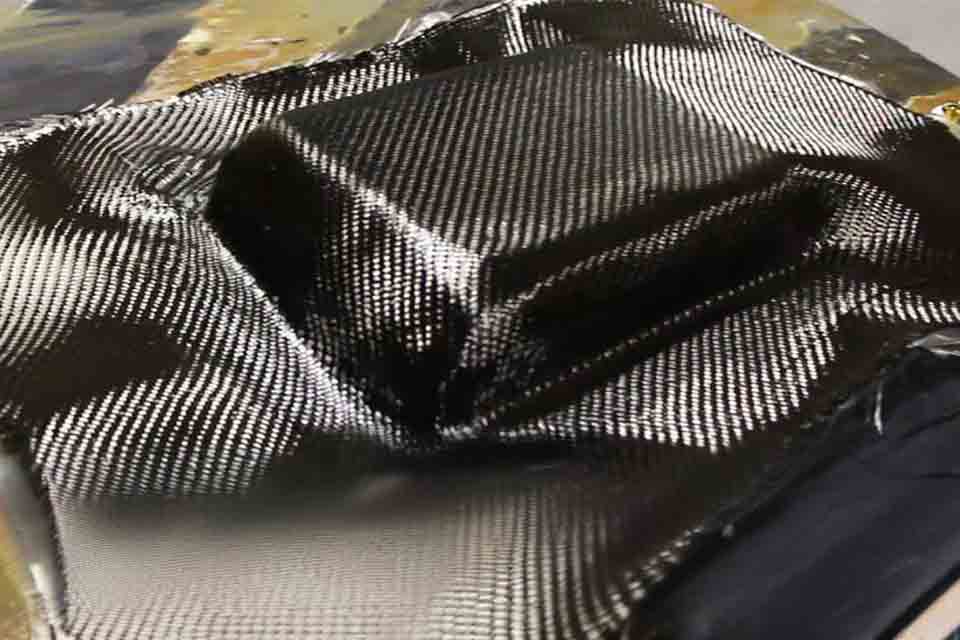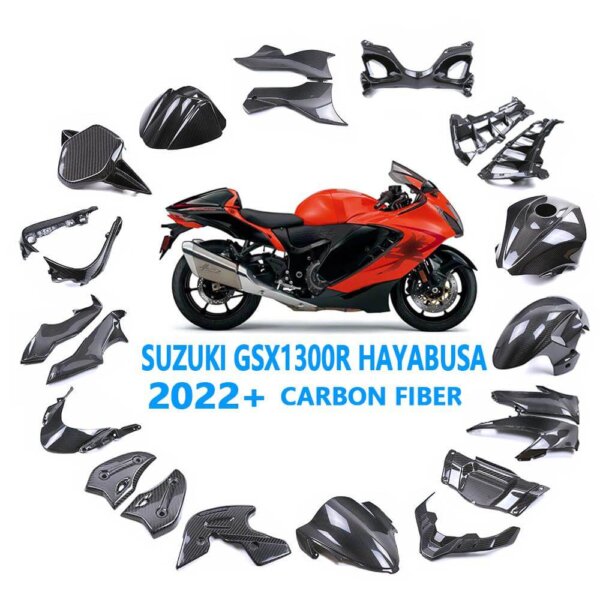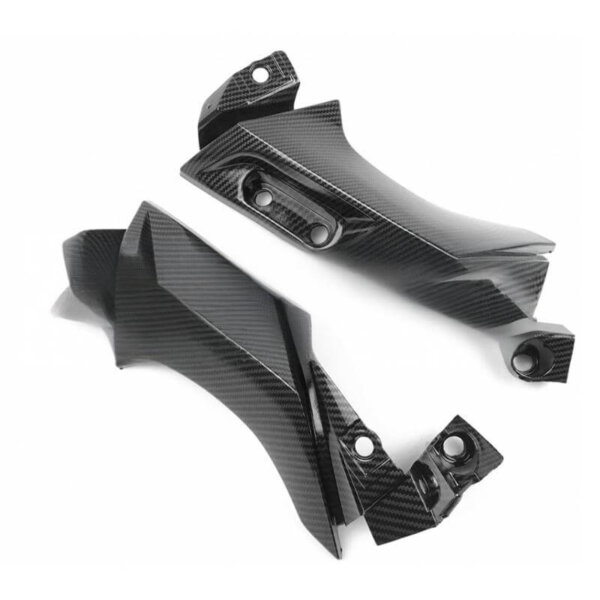Comment fabriquer de la fibre de carbone : Guide simple en 10 étapes
Qu'est-ce que la fibre de carbone ?
Fibre de carbone est un matériau solide et léger. Il est constitué de fines lamelles de carbone. Ces brins sont même plus fins qu'un cheveu humain ! Fibre de carbone (également orthographié de cette façon) est utilisé pour fabriquer des voitures, des vélos, des avions et des équipements sportifs.
"La fibre de carbone est cinq fois plus résistante que l'acier mais pèse beaucoup moins. Elle est donc idéale pour les objets qui doivent être à la fois solides et légers." - Expert en ingénierie
Pourquoi utiliser la fibre de carbone ?
Fibre de carbone a de nombreux points positifs :
- Il est très solide
- Il est très léger
- Il ne rouille pas
- Il peut être façonné de différentes manières
- Il a l'air cool
C'est pourquoi de nombreuses personnes fabriquer de la fibre de carbone des pièces pour les voitures, les vélos et d'autres objets.
Ce qu'il faut pour fabriquer de la fibre de carbone
Travailler avec fibre de carboneVous avez besoin de ces outils et de ce matériel :
| Outils | Matériels |
|---|---|
| Ciseaux | Tissu en fibre de carbone |
| Gants | Résine époxy |
| Gobelets de mélange | Cire de libération |
| Bâtons de mélange | Moule |
| Brosse | Feuille de plastique |
| Pince | Papier de verre |
Étapes de base pour la fabrication de pièces en fibre de carbone
1. Planifier votre projet
Avant de commencer fibre de carbonePour cela, il faut savoir ce que l'on veut faire. Commencez par un simple formes. Les formes grandes ou dures peuvent être long.
2. Fabriquer ou obtenir un moule
Le moule est ce qui donne à votre pièces en fibre de carbone leur forme. Vous pouvez :
- Acheter un produit prêt à l'emploi moule
- Fabriquez-en un en bois
- Utiliser une vieille pièce comme moule
Mettre cire de démoulage sur votre moule donc le fibre de carbone ne s'y tiendront pas.
3. Découper le tissu en fibre de carbone
Tissu en fibre de carbone se présente sous forme de feuilles avec différents tisser types. Le plus courant est un sergé modèle. Coupez le tissu pour qu'il corresponde à votre moule et un peu plus sur les bords.
4. Mélanger la résine
Résine époxy c'est ce qui fait que le fibre de carbone durs et solides. La plupart des résine se présente sous la forme d'un en deux parties mélange :
- Verser la partie A et la partie B dans une tasse
- Bien mélanger, mais pas trop vite (pour éviter bulles d'air)
- Utilisez-le rapidement, car il commencera à durcir.
Soyez prudent ! Portez des gants lorsque vous travaillez avec résine.

5. Mouiller la fibre de carbone
Maintenant vient le pose par voie humide pas :
- Mettez votre tissu en carbone sur une surface plane
- Utiliser un pinceau pour mouillé le tissu avec résine
- Assurez-vous que tous les fibre de carbone se mouille
- Ne pas en utiliser trop résine - juste assez pour mouillé tous les fibre
6. Placer sur le moule
Mettez le mouillé fibre de carbone sur votre moule:
- Commencer par une extrémité et lisser
- Repousser toute bulles d'air
- Ajoutez des couches supplémentaires si vous avez besoin d'une partie plus solide
- Chaque nouvelle couche fait partie de la layup
7. Éliminer la résine supplémentaire
Trop résine rend votre pièce lourde et moins résistante. Utilisez un outil en plastique pour faire sortir résine supplémentaire.
8. Appliquer la pression
Vous devez comprimer le fibre de carbone au fur et à mesure qu'il sèche :
- Utiliser un sac sous vide méthode
- Ou utiliser pince et les panneaux plats
- Ou essayez perfusion sous vide pour les grandes pièces
9. Let It Cure
Vous attendez maintenant la résine à guérir:
- Vérifiez votre résine boîte pour guérir temps
- La plupart prennent 24 heures à température ambiante
- Maintenir la pièce immobile pendant qu'elle cures
- Certaines personnes utilisent chaleur et pression à guérir plus rapide
10. Démoulage
Après le résine est complètement dur :
- Enlever tout emballage ou sac
- Tirez doucement sur le pièce finie de la moule
- Découper les bords irréguliers
- Poncer les endroits qui doivent être lisses
Types de fibres de carbone
Pas tous fibre de carbone est le même. En voici les principaux types :
- PAN (fabriqué à partir de polyacrylonitrile)
- Brai (fabriqué à partir d'huile)
- Rayonne (moins courant maintenant)
La plupart des utilisateurs domestiques travaillent avec des systèmes PAN fibre de carbone.
Différentes façons de fabriquer des pièces en fibre de carbone
Il y a plusieurs façons de travailler avec fibre de carbone. Les voici, du plus simple au plus difficile :
Pose par voie humide
C'est ce que nous venons de voir. C'est le moyen le plus courant pour les utilisateurs domestiques de fabrication de pièces en fibre de carbone.

Méthode de pré-imprégnation
Pré-imprégné ou pré-imprégné fibre de carbone est accompagné de résine qu'il contient déjà. Il doit :
- Reste froid jusqu'à ce que vous l'utilisiez
- Être chauffé à guérir
- A souvent besoin d'un autoclave (un grand four chaud)
C'est ainsi que de nombreux pro renforcé par des fibres de carbone sont fabriquées.
Infusion sous vide
Avec cette méthode :
- Le sec tissu en fibre de carbone est placé sur le moule
- Il est scellé dans un sachet
- L'air est aspiré
- Résine est tiré vers l'intérieur infuser tous les fibre
Cette méthode convient pour les grandes pièces et peut donner des résultats très solides.
Fabriquer de la vraie fibre de carbone à partir de rien
Les étapes ci-dessus montrent comment travailler avec tissu en fibre de carbone qui est déjà faite. Mais comment fibre de carbone elle-même est fabriquée ? Voici la fabrication de la fibre de carbone processus :
- Commencez par un polymère comme polyacrylonitrile
- Le tirer en fines lamelles filament cordes
- Chauffer ces cordes à haute température sans air
- Les chaînes de caractères sont ainsi transformées en carbone
- Le la fibre de carbone commence en tant que simple brin fibres
- Ce sont tissé dans une étoffe
Il faut équipement spécialisé et se fait dans les usines.
Conseils de sécurité pour travailler avec la fibre de carbone
Travailler avec la fibre de carbone peut être amusant, mais il faut être prudent :
- Porter des gants pour toucher résine
- Porter un masque pour éviter de respirer poussière de fibre de carbone
- Travailler dans une pièce bien aérée
- Tenir les aliments à l'écart de la zone de travail
- Nettoyer immédiatement les déversements
Projets à essayer
Si vous voulez apprendre à fabriquer du carbone commencer par un petit nombre :
- Une simple plaque plane
- Un étui de téléphone
- Une petite boîte
- Une pièce de vélo
Au fur et à mesure que vous vous améliorez, vous pouvez faire des choses plus complexes. pièces en fibre de carbone.
Erreurs courantes à éviter
De nombreuses personnes commettent ces erreurs :
- L'utilisation d'une trop grande quantité résine
- Ne pas obtenir tous les bulles d'air dehors
- Être pressé pendant guérir temps
- Fabrication d'une pièce trop fine et trop faible
- Essayer une forme trop complexe pour votre niveau de compétence
Comparaison de la fibre de carbone avec d'autres matériaux
Comment les fibre de carbone par rapport à d'autres matériaux d'ingénierie?
| Propriété | Fibre de carbone | Aluminium | Acier | Plastique |
|---|---|---|---|---|
| Poids | Très léger | Lumière | Lourd | Lumière |
| Résistance à la traction | Très élevé | Moyen | Haut | Faible |
| Compression force | Moyen | Moyen | Haut | Faible |
| Flexion force | Haut | Moyen | Moyen | Faible |
| Module | Haut | Moyen | Haut | Faible |
| Coût | Haut | Moyen | Faible | Très faible |
Domaines d'utilisation de la fibre de carbone
Fibre de carbone est utilisé dans de nombreux endroits où un matériau léger est nécessaire :
- Aérospatial pièces pour avions
- Automobile pièces de course
- Articles de sport comme les raquettes de tennis et les clubs de golf
- Vélos et pièces détachées
- Dispositifs médicaux
- Matériel de musique
Méthodes avancées pour la fibre de carbone
Si vous vous intéressez de près à la fabrication de fibres de carbonevous pouvez essayer :
- L'utilisation d'un CNC pour réaliser des moules précis
- Fabrication haute performance les pièces avec des schémas de stratification spéciaux
- Ajouter d'autres matériaux pour faire matériaux composites
- L'utilisation de différents types de résine comme résine de polyester ou thermodurcissable types
Réflexions finales
Fabriquer des objets avec fibre de carbone peut être amusant et gratifiant. Commencez par des choses simples, soyez patient, et bientôt vous ferez des choses étonnantes. pièces en fibre de carbone!
Le la complexité de la pièce déterminera la difficulté de sa fabrication. Avec de l'entraînement, vous pouvez faire rentable et cool produit fini des articles à la fois solides et légers.
Vous souhaitez en savoir plus ? Visitez notre composite sur mesure ou consultez notre guide sur les comment fabriquer un moule en fibre de carbone.
Prêt à commencer ? Procurez-vous des fournitures auprès de notre usine de carbone ou en savoir plus sur fabriquer ses propres pièces en fibre de carbone.
Appelez-nous/Whatsapp : +86 13626191009
Courriel : [email protected]




